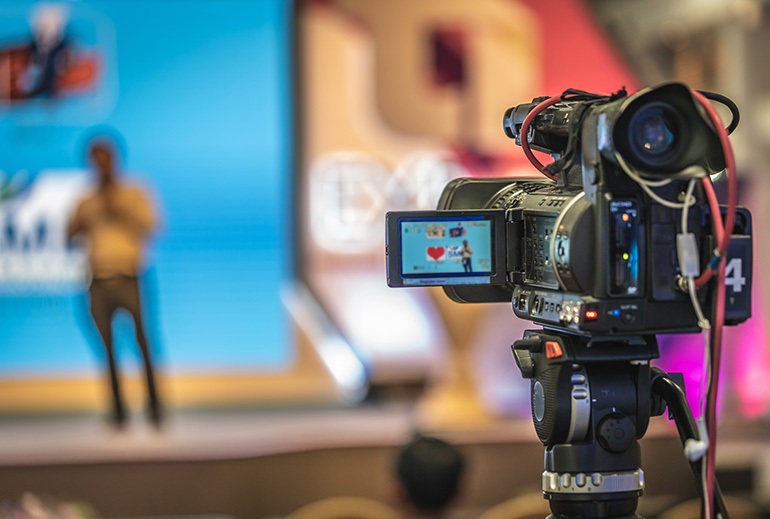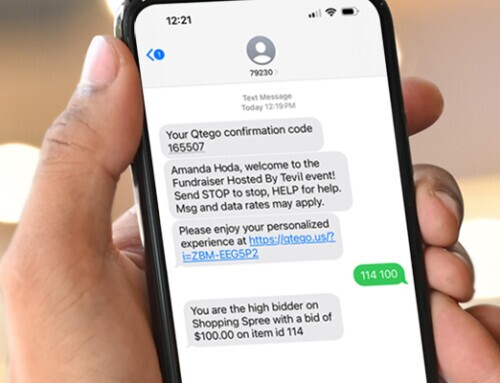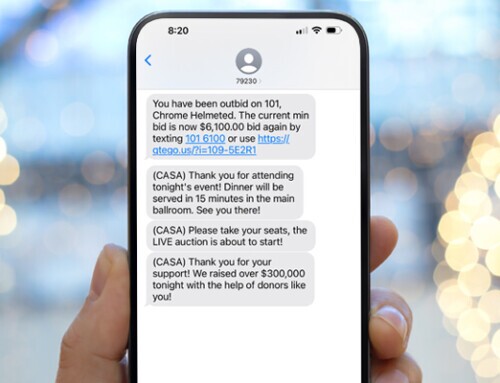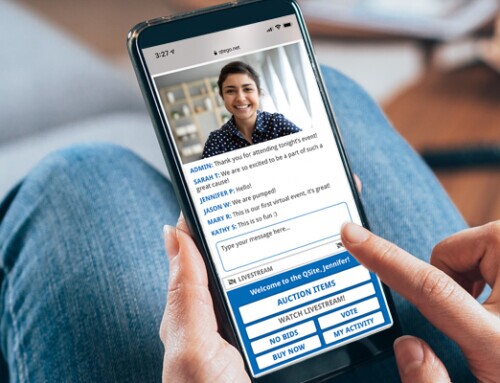Non-profits often ask us how to livestream a fundraiser. Do you need advanced software? Special equipment? An AV team? A professional production company?
The answer is: it depends. There are many ways to make a virtual fundraiser a success, and Qtego can help you think through the different livestream options.
Because we’ve worked so closely with non-profits over the years and in the switch to virtual fundraising in 2020, our team has helped all sorts of organizations navigate decisions about how to livestream a fundraiser. Here are some things to consider as you make your own plans:
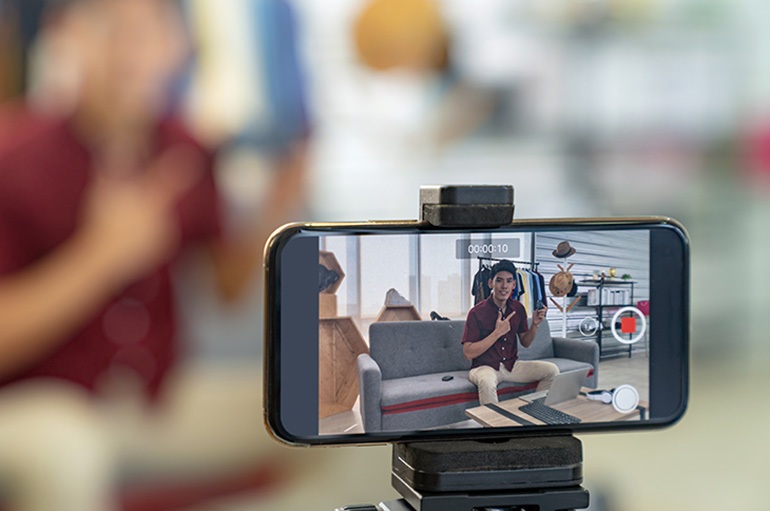
1) What’s your style?
Some organizations are known for lavish galas and over-the-top production for in-person events. If your donors expect big things from your gala, you need to deliver on that expectation for your virtual events, too. In these situations, hiring a professional production company makes sense. You’ll get a totally polished look, a seamless guest experience, and put the donors in the same frame of mind they remember from your previous events—so they are primed to give in the same ways.
Spending your budget on a production company can be a smart move—maybe you put your usual venue and catering budget toward it—if it helps your organization raise more money.
However, other non-profits have a different personality. If your group is known for casual, laid-back events, it may not make sense to invest in slick production. You can still achieve a great result with a dialed down approach. Whether you film your livestream on your phone or use a video camera and some lights you already have on hand, a DIY production can be successful if you prioritize connection and audience engagement.

2) What’s your workload?
Another factor to consider is your staff. Do you have time to figure out the ins and outs of livestream production, source equipment, and handle tech issues? If not, and if your budget allows, it may make sense to hire a local AV team or a production company.
You can also outsource tech issues and save time by tapping into your network. Maybe one of your board members has video equipment, or maybe a major supporter has connections with a church or civic organization that has an AV team. Don’t be afraid to ask your inner circle for help.

3) What’s your budget?
We’ve mentioned it before, but it bears repeating that when you’re asking how to livestream a fundraiser, the answer is not cut-and-dry. A virtual fundraiser is a little bit like buying a car. You can get from Point A to Point B in a lot of different ways—and at a lot of different price points.
Because the success of your event really depends on your ability to connect with donors and make a compelling case for your cause, we recommend that you think through your budget carefully. Spending money in a way that frees up your staff to cultivate donor relationships or engages guests more deeply with your cause makes sense, because you’ll raise more money as a result. This calculation is different for each organization and each event, and we know it can be tricky to figure out.
We have resources that may help you think about all of the angles involved in virtual fundraising, and your own records from past events can also help shed light on your decision. What has led to higher donations in the past? Cultivating particular donors? A specific type of programming? Using a professional auctioneer? Analyzing past events may help you decide how to livestream a fundraiser this year.
Qtego is always here to help. We’ve worked with non-profits of all types and sizes around the country for decades, and we’ve led the way into virtual and hybrid fundraising in 2020. Our team has seen what works and what doesn’t, and we’re happy to connect you with best practices that make sense for your organization. Let’s talk about ways to keep your organization going strong, whether you choose in-person, hybrid, or virtual fundraising events.

